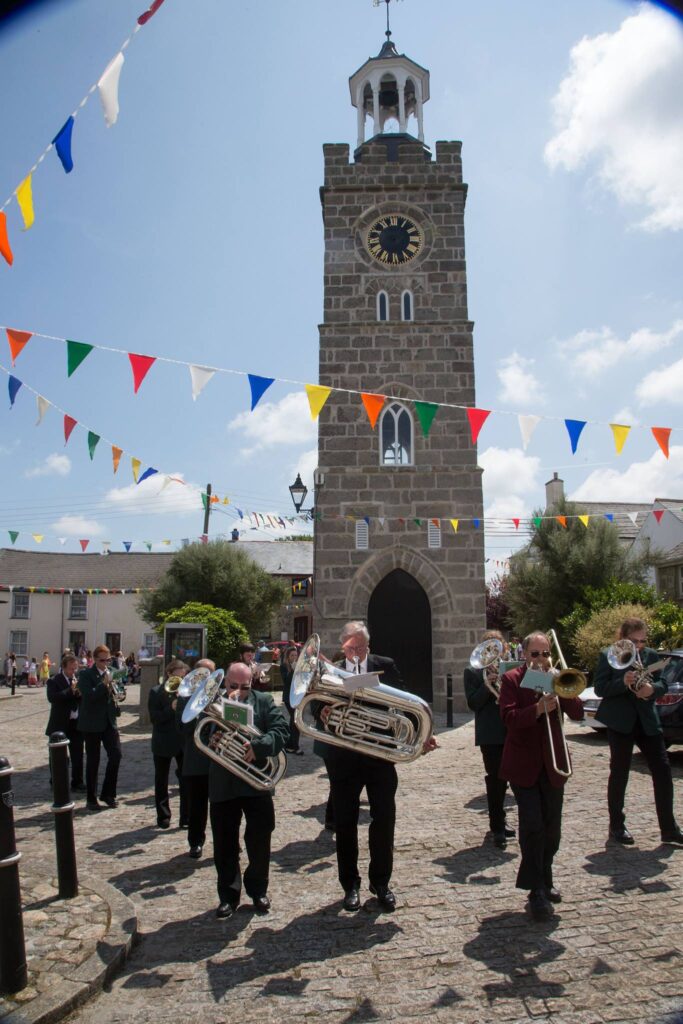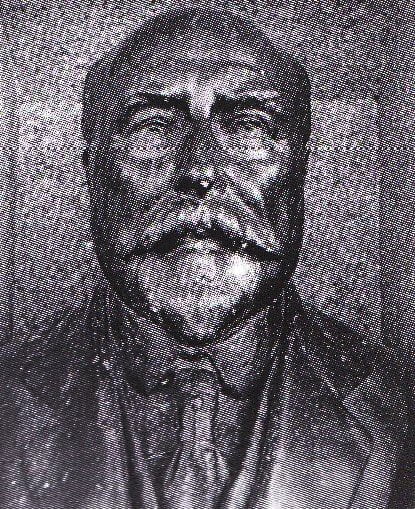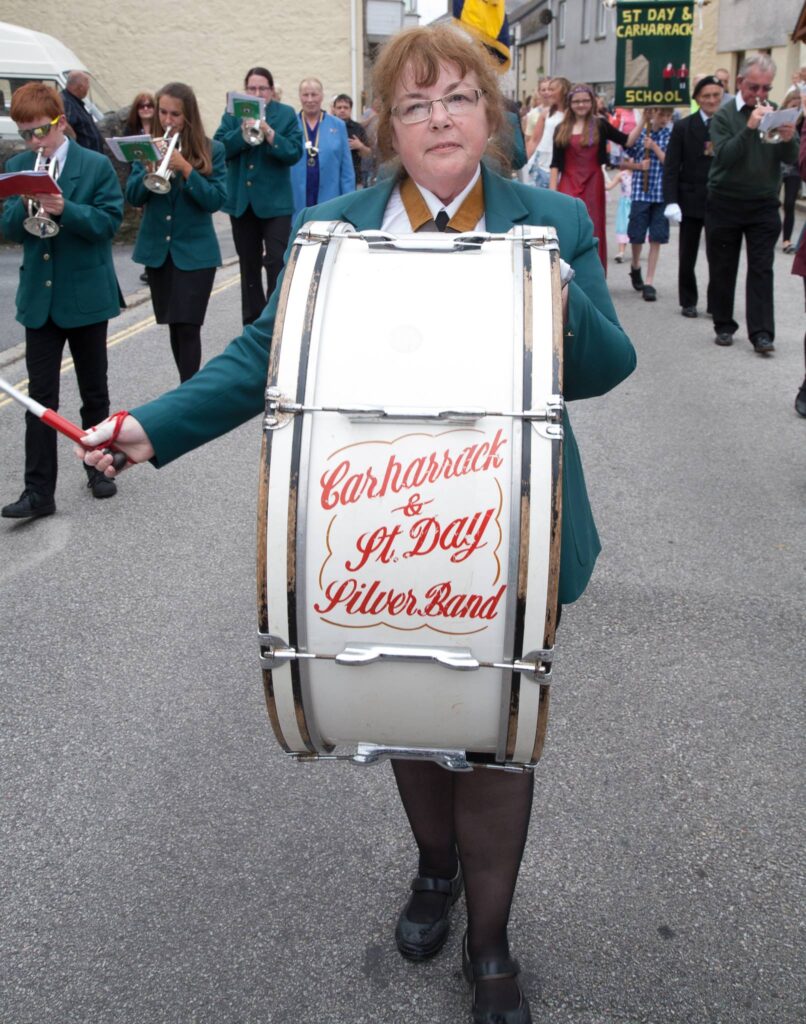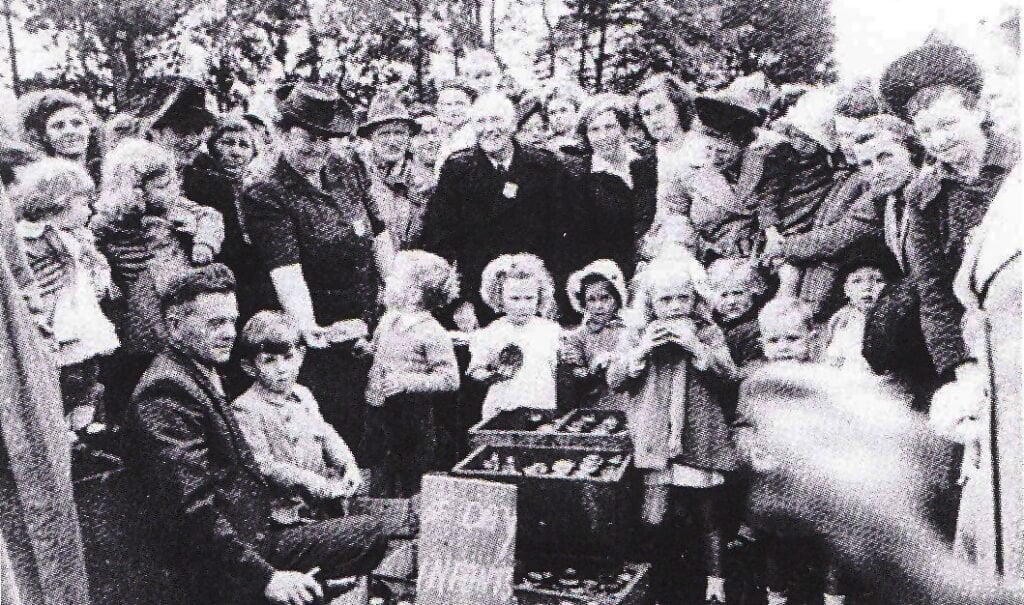Many Cornish towns and villages continue to celebrate their annual feast, but few match the enthusiasm and goodwill enjoyed at St. Day. Each year hundreds upon hundreds flock to the ancient town to witness events which have since matured to tradition. Flags line the wide streets and stubbly cottage fronts throw the spectacular sun from their freshly dried whitewash. Girls in white frills and lace skip on the hot baked pavements and boys with bow-ties chase and pull and push. Crowds funnel towards the school to see their happy, noisy children fall in line behind a proud band who spit, polish, and blow odd notes as they wait for the allotted hour. This is St. Day Feast, more than a moment, more than a memory. This is St. Day Feast, which like the honoured town clock stands to mark not just the passing of a day or a year, but the very passing of time itself. “Ell boy, tis good to see ee gen… must be feast four year ago since I seen ee last. Where ‘aye ee bin all this time?” remarks one portly old gent to a friend, his dialect true and unreserved. Old friendships are rekindled, and new acquaintances made as young and old mix freely exchanging greetings, smiles and the latest gossip. News is travelling fast that the exiles have returned in force this year, including a few from abroad. Surely no coincidence, nay – rather well-planned I’d say: where else could they hope to see everyone at once – whether they like them or not! It could only ever be one occasion, St. Day Feast, the day when all the Saint’s children return. None of the county antiquarians speculate the origins of St. Day Feast, but William Lake, probably quoting C.S. Gilbert, who himself probably plagiarises the Rev. Richard Polwhele (in The History of Cornwall, c. 1803), enlightens us a little. Despite St. Day being part of the ancient parish of Gwennap the town has continued the singular tradition of custom, of “holding its feast on a different day”. It seems that Gwennap celebrates its feast day on Whit Sunday, and St. Day three or four weeks after.
Little mention is made of St. Day Feast until the mid-19th century, where the event becomes well documented in every Cornish newspaper. In true Victorian style the festivities exude the usual bright, vibrant gaiety so cus-tomary of the times. Reports remind us that finely dressed folk line the roads from Crofthandy, Carharrack, Redruth and Scorrier, making their way to parade the streets of St. Day. The fair arrived with numerous exhi-bitions and shows. Attractions included Hewletts and latterly Purchase’s Waxworks, Edmonds Menagerie, Chamberlain’s Mechanical Exhibition, the Marionettes and Hancocks Hobby Horses all being very well patronised. A host of swingboats. shooting galleries and other entertainments thronged from 6 o’clock until well past midnight. The week-long programme then included a cricket match between married and single men, a street fair, church concert and the all-important wrestling tournament in the field behind the Lion Inn. (Behind the present chip shop which until the 1960s was still used as the fair field on feast days). The wrestling caused great excitement and drew huge crowds because it often included local boys like Alfred Uren, Samuel Jackson, James Matthews and Richard Gillard. Prizes were con-siderable. In 1878, first prize was £4 so the event was well supported, attracting entrants from all over the county and at times a guest from “up country”. At best the tournament passed off without incident, or at worst the ring was “broken” along with a few noses as chaos reigned. Being the capital of Cornwall’s greatest copper min-ing district, St. Day suffered severe economic depression when the mines fell silent. Yet still the hardy character of the town can be witnessed as locals continued to whitewash walls, put on their best wide-brimmed hat and make their way to the celebration. The South African money was still to be spent; money sent from those who boasted their skills abroad. But, alas, it was an insecure economy.

The passing of the Great War heralded a new world. Communities counted losses and began to rebuild. St. Day had lost contact with many displaced sons, so with no South African safety-net the real recession would sweep with fury. But, every good place has a saving grace. At St. Day it came in the form of William John Mills, the son of a notable Cornish family, who had himself moved to Devon to succeed in a large dairy business. After contact with Richard R. Blewett the local school headmaster, William Mills generously agreed to help finance the cost of several charitable projects which included a new recreation field and the complete conversion of Simmons Street into comfortable dwellings for local elderly residents. A plaque was erected in 1933 as a tribute to the endowment and the street was renamed Mills Street after its patron.

A community council was formed, and St. Day experienced a new lease of life. To mark the change in fortune, feast celebrations took on a new, more energetic appearance, whereby local school children (inspired by Blewett) marched in pro-cession behind the band, along Scorrier Street and halted at Mills Street where selection of music was played. Flowers were arranged, then the procession continued to Vogue and back to Mills Street to collect the flowers, marching on to the place them around the Mills Memorial in the playing field. A saffron bun, made by Redruth’s Glasson’s Bakery, was given to each child along with a shilling.

From the early 1970s, Jolly’s Mineral Waters have donated a bottle of pop for every child. Sports including the sack race, bean-bag race, three-legged race, obstacle race and the sprint, all still continue today. This year saw the 21st feast dance around the town in the evening. In 1976, Linda Williams along with a few friends, organised a celebratory dance to music written especially for the feast by the late Kenneth Pelmear.
Such is their family contribution that her husband Keith has marshalled the feast and the dance for the last 25 years; only this year giving way to ill-health. The dance continues the spirit of the feast, in particular the element where young and old fused in ritual and custom. As Georgie Pellow thunders the rhythmic beat, and the band look to Roy Trelease for count, the harmonious vibration of a inspired ensemble stirs the crowds to life and merriment. The evening moves on in glitzy swirl of dance and fashion.


At the close, the village Vicar conducts a final prayer in the shadow of the clock tower and another year fades into the late evening sun. Only the young look to steal those final hours as they drift to the twinkling coloured lights and muffled sounds of the fairground. Summer curtains are pulled and illuminated as the last of the saffron buns wrest their fate beside the hot teapot.
